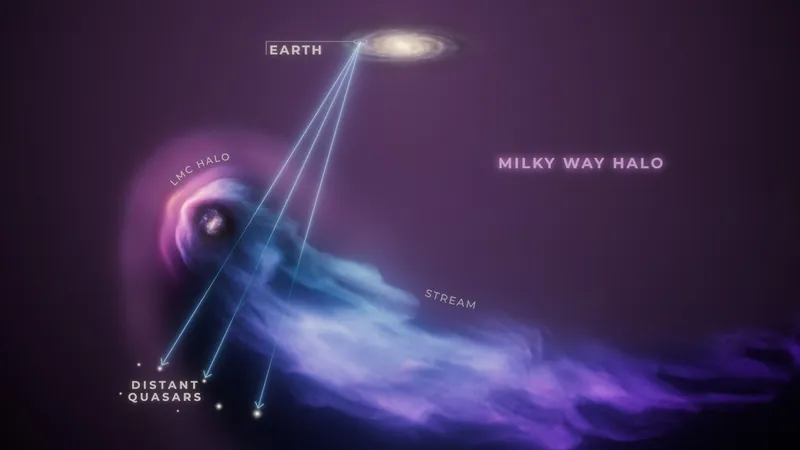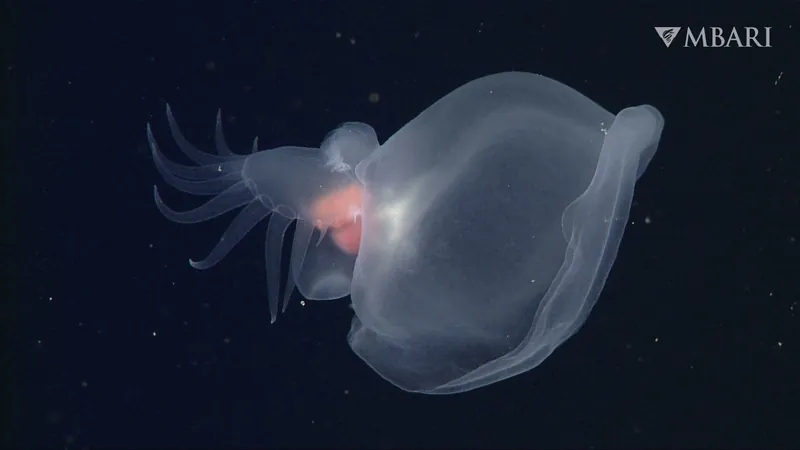
How the Large Magellanic Cloud Survived Its Encounter with the Milky Way
2024-11-18
Author: Michael
Introduction
The Large Magellanic Cloud (LMC), a small yet fascinating galaxy, weighs in at just one-tenth the mass of our Milky Way. Positioned about 160,000 light years from Earth, it is remarkably close in the vast expanse of the universe. This dwarf galaxy is an impressive sight in the southern hemisphere, where it brightens the night sky, spanning the width of approximately 20 full Moons.
Dynamic Nature of the LMC
Although the LMC may appear to us as unchanging, it is actually a dynamic and active system that has just experienced a close encounter with our galaxy. Recent observations from astronomers reveal critical insights into this cosmic interaction, which has significant implications for our understanding of galaxy evolution.
Characteristics of the LMC
What sets the LMC apart from typical dwarf galaxies is its unexpectedly dense core, accompanied by a small and faint halo. Contrary to what one might expect, this has led some astronomers to propose that the LMC is not in orbit around the Milky Way but instead is merely passing through. As it traversed the massive and dense halo of the Milky Way, it likely shed considerable portions of its own halo, which could now be trailing behind it, resembling a comet's tail.
The Challenge of Proving the Theory
Proving this theory, however, has been a considerable challenge due to the elusive nature of the LMC's halo, which is too faint and diffuse for direct observation. Fortunately, a new study has cracked the code by harnessing the brilliant light of distant quasars—luminous entities powered by supermassive black holes lurking in faraway galaxies.
Groundbreaking Research
In a groundbreaking effort, researchers utilized data from the Hubble Space Telescope to focus on quasars that lay in the vicinity of the LMC halo. By carefully mapping the light of 28 quasars, the team identified how the quasar light interacts with the LMC's halo as it travels toward Earth. This allowed for the first ever mapping of the LMC's halo, revealing that only about 10% of its original halo remains intact; the rest appears to be shed, lingering behind like a trail left by a comet.
Implications for the Future
But what does this mean for the LMC's future? Astronomers are eager to pursue further investigations, employing additional quasars to gain deeper insight into the LMC halo, especially at the region where it is colliding head-on with the Milky Way's halo. Upcoming research may shed light on the long-term consequences of such interactions—perhaps redefining our understanding of galaxy formation and the potential transformation these celestial giants can undergo as they dance through the cosmos.
Conclusion
As we continue our exploration of the universe, the tale of the Large Magellanic Cloud serves as an intriguing chapter that showcases the intricate and often violent relationships between galaxies, reminding us that even the cosmos is a playground of turbulence and change! Stay tuned as we unravel more cosmic mysteries in the universe's grand narrative!









 Brasil (PT)
Brasil (PT)
 Canada (EN)
Canada (EN)
 Chile (ES)
Chile (ES)
 España (ES)
España (ES)
 France (FR)
France (FR)
 Hong Kong (EN)
Hong Kong (EN)
 Italia (IT)
Italia (IT)
 日本 (JA)
日本 (JA)
 Magyarország (HU)
Magyarország (HU)
 Norge (NO)
Norge (NO)
 Polska (PL)
Polska (PL)
 Schweiz (DE)
Schweiz (DE)
 Singapore (EN)
Singapore (EN)
 Sverige (SV)
Sverige (SV)
 Suomi (FI)
Suomi (FI)
 Türkiye (TR)
Türkiye (TR)